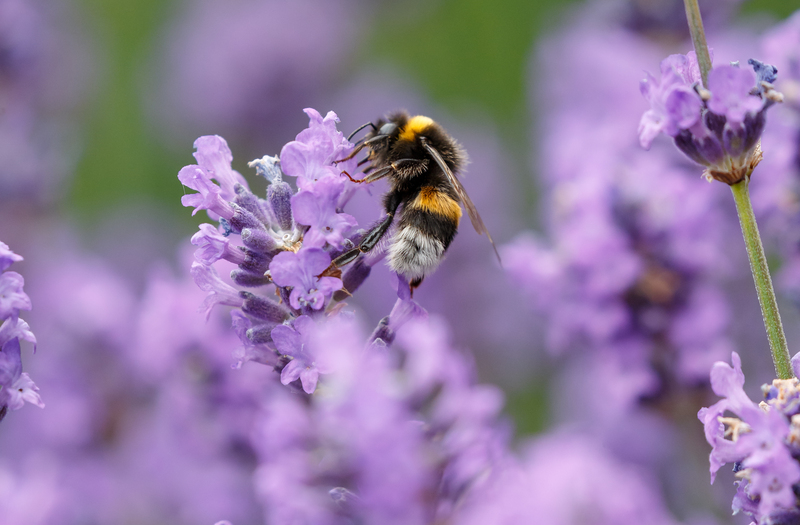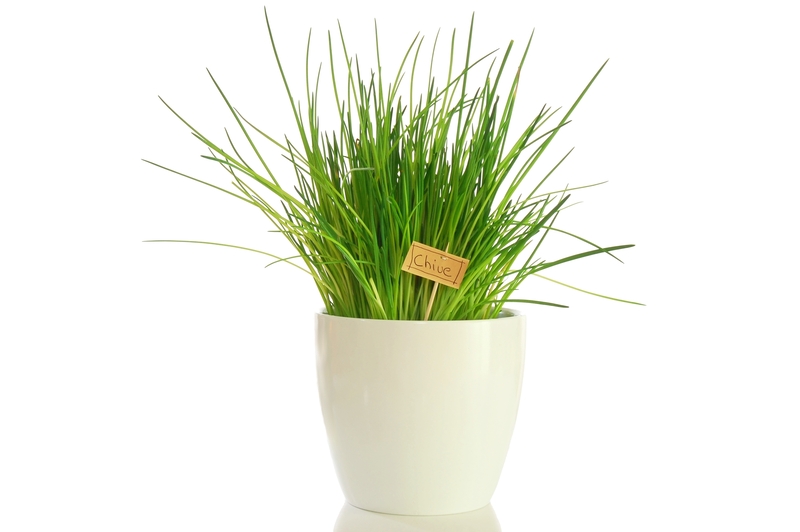Hedge Artistry: Shaping Techniques Explored
Posted on 08/09/2025
Hedge Artistry: Shaping Techniques Explored
Hedge artistry is an ancient yet continually evolving gardening practice. Often synonymous with topiary and hedge shaping, this green art form marries horticultural skill with creative vision, transforming ordinary hedgerows into living sculptures. In this comprehensive guide, we will explore the techniques, tools, design principles, and key considerations for all enthusiasts who wish to delve into the world of hedge artistry, shaping techniques, and the transformative impact of this beautiful tradition.
What is Hedge Artistry?
At its core, hedge artistry refers to the craft of training and pruning shrubs, especially evergreen species, into decorative forms or intricate designs. This can range from simple geometric shapes to elaborate animal figures, spirals, and even entire scenes. The artistry in hedge shaping involves carefully planned cuts, patient nurturing, and an understanding of plant growth patterns.
History and Origins of Hedge Art
The practice of shaping hedges dates back at least to the ancient Romans, who sculpted cypress and boxwood for their gardens. It later flourished in formal European estates of the Renaissance and Baroque periods. Boxwood topiary remains a key element in classic French and English gardens, often symbolizing elegance and control over nature.

The Benefits of Hedge Shaping
- Aesthetic Enhancement: A well-sculpted hedge adds a dramatic visual focal point to gardens.
- Structural Function: Shaped hedges can serve as windbreaks, privacy screens, and living fences.
- Biodiversity Boost: Dense, maintained hedges offer habitat for birds, insects, and small mammals.
- Value Addition: Expertly pruned hedges and topiary can increase property value and curb appeal.
- Therapeutic Activity: Hedge trimming is a mindful, rewarding pursuit for garden enthusiasts.
Popular Plants for Hedge Artistry
While almost any woody shrub can be trained, hedge shaping techniques are most effective with species that tolerate repeated cutting and grow dense foliage. Popular choices include:
- Boxwood (Buxus sempervirens): The classic topiary staple, revered for tiny leaves and tolerance to heavy pruning.
- Yew (Taxus baccata): Another traditional favorite boasting rich green foliage and longevity.
- Privet (Ligustrum): Fast-growing and adaptable, ideal for larger hedge shapes.
- Holly (Ilex species): Glossy leaves and berries bring year-round interest.
- Hornbeam (Carpinus betulus): Retains leaves through winter; popular in formal hedging.
- Lonicera (Honeysuckle): Dense, tough, and excellent for intricate designs.
Essential Tools for Hedge Artistry
Achieving crisp lines and healthy growth depends on having the right equipment. Some key tools for hedge shaping include:
- Hand Shears: For detail work and smaller hedges.
- Pruning Loppers: To tackle thicker stems.
- Electric or Petrol Hedge Trimmers: Perfect for larger or established hedges requiring uniform cuts.
- Topiary Frames and Guides: Wire frames help beginners achieve complex topiary shapes.
- Measuring Tape and Stakes: Essential for planning symmetry and layout.
Basic Hedge Shaping Techniques
1. Formal Hedge Trimming
Formal hedge artistry emphasizes clean, straight lines and well-defined edges. The most common shapes are rectangles, squares, and triangles. Proper trimming involves:
- Marking Guidelines with string tied between stakes to ensure level lines.
- Trimming from Bottom Up to avoid clippings shading lower foliage.
- Angling Sides slightly (wider at the base) to maximize sunlight exposure.
2. Topiary: Living Sculpture
Topiary is the ultimate expression of hedge art, creating shapes, animals, spirals, and abstract forms. Techniques include:
- Wire Frames: Placing wire or mesh frames over the shrub and cutting to the outline, perfect for beginners.
- Freehand Pruning: Suitable for simple balls, cones, or spirals. Involves careful, gradual shaping.
- Layering and Filling: Allowing new growth to fill in blanks before making final cuts.
- Training Supports: Using rods, string, or pegs to bend and guide branches.
3. Cloud Pruning (Niwaki)
This Japanese-inspired hedge technique involves pruning shrubs like boxwood or yew into billowy, cloud-like clusters. It creates an ethereal, artistic effect commonly featured in Japanese gardens. Key points:
- Selective Pruning to accentuate natural forms.
- Focus on Open Spaces among mounds to create depth and intrigue.
- Annual Maintenance to maintain the "cloud" effect.
Advanced and Creative Hedge Shaping Styles
- Espalier: Training shrubs against walls in geometric or fan-shaped patterns.
- Topiary Parterre: Creating intricate floor-level patterns, often in knots or arabesques.
- Maze and Labyrinth: Clipping hedges into elaborate puzzle gardens; a European specialty.
- Animal and Figurative Topiary: Developing stunning animal shapes, often using boxwood and yew.
- Allee and Tunnels: Shaping hedges into overhead arches, tunnels, and tree-lined walkways.
Inspirational Hedge Artistry Examples
- Levens Hall (UK): World-renowned for its ancient, elaborate topiary.
- Marqueyssac Gardens (France): Known for extensive, flowing boxwood cloud hedging.
- Longwood Gardens (USA): Features spiraling and animal-shaped topiary masterpieces.
Best Practices for Hedge Artistry Success
Mastery of hedge art combines patience, planning, and an eye for beauty. Here are critical guidelines to achieve flourishing and stunning results:
- Plan Your Design: Sketch your intended shape, considering plant species, growth habit, and garden space.
- Start Simple: For beginners, practice basic balls, cubes, or cones before attempting animals or spiral shapes.
- Prune Regularly: Little and often is the rule - regular, gentle cuts encourage dense growth and maintain defined shapes.
- Sharpen Your Tools: Clean, sharp blades promote neat wounds and plant health.
- Feed and Water: Shaped hedges need extra nutrients and water to sustain lush growth, especially during formative periods.
- Prune at Right Time: Mid-to-late spring or late summer are usually best, depending on your plant selection.
- Protect From Frost: Avoid heavy pruning before hard frosts, which can damage exposed stems.
Common Mistakes and How to Avoid Them
- Cutting Too Much at Once: Over-pruning can stress or kill plants. Always remove less than a third of growth in one session.
- Neglecting the Base: Hedges must be broader at the bottom than the top to ensure lower leaves get enough sunlight.
- Ignoring Plant Health: Watch for pests, diseases, or nutrient deficiencies that affect growth and shape.
- Incorrect Timing: Some species, like boxwood, are vulnerable to harsh weather after pruning.
Seasonal Care for Shaped Hedges
Proper seasonal care ensures your hedge artistry remains healthy and vibrant throughout the year:
- Spring: Main pruning period; fertilize and water well as growth resumes.
- Summer: Maintain shape; hedge may need light trims as it grows quickly.
- Fall: Last pruning of the season; avoid late cuts in cold regions.
- Winter: Clean debris, watch for frost damage, and plan next year's designs.
Hedge Artistry for Small Gardens
Even with limited space, you can enjoy the beauty of miniature hedge art. Dwarf boxwoods, yew, or holly provide ample opportunities for creative shaping in pots or raised beds. Use geometric forms for structure or experiment with playful animal silhouettes on a smaller scale.
Eco-Friendly Hedge Shaping Practices
- Opt for Native Species: Local plants are better adapted to your climate and more beneficial for wildlife.
- Compost Clippings: Shredded hedge trimmings make excellent mulch or soil amendment.
- Avoid Over-Feeding: Use organic fertilizers to encourage steady, healthy growth without excess runoff.
- Encourage Biodiversity: Include hedges that flower or fruit to support pollinators and birds.
Hedge Artistry FAQ
Q: How often should I trim shaped hedges?
A: For best results, trim formally shaped hedges two to three times a year during growing seasons. Topiary and intricate shapes may require monthly maintenance.
Q: What's the best time of year for artistic hedge trimming?
A: Most shaping should be done in mid-spring or late summer. Avoid cutting before extreme heat or frosts.
Q: Are there fast-growing plants suitable for beginner hedge art?
A: Privet and holly grow vigorously, allowing for fast experimentation, though they require more frequent trimming.
Q: Can I shape old or neglected hedges?
A: Yes, with patience! Rejuvenation involves gradual thinning and shaping over 2-3 seasons to avoid plant shock.
Innovative Trends in Hedge Shaping
Modern hedge artistry techniques blend traditional pruning with contemporary design. Some trends include:
- Mixed Species Hedges: Combining different plants for color, leaf texture, and seasonal interest.
- Statement Sculptures: Large, abstract hedge forms as dramatic garden features.
- Wildlife-Friendly Shapes: Designs that include dense bases or berry-bearing species.
- Community Artistry: Public gardens using hedge art for interactive and educational displays.

Getting Started: Your First Hedge Art Project
- Pick Your Plant: Start with a forgiving species like boxwood or privet.
- Choose Your Shape: Begin with a simple ball or cube for early success.
- Set Up Guides: Use bamboo canes or string for accuracy.
- Use the Right Tools: Keep shears sharp and clean.
- Be Consistent: Revisit monthly to tweak the shape and keep growth dense.
- Enjoy the Process: Hedge artistry is as much about patience and creativity as the final result.
Conclusion: The Lasting Appeal of Hedge Artistry
In the world of gardens and outdoor artistry, few traditions offer as much enduring charm and personal expression as hedge artistry. Learning and applying various shaping techniques fosters a deeper connection with plants and celebrates the union of nature and design. Whether you dream of geometric parterres or whimsical animal forms, the journey into hedge artistry is a rewarding, ever-evolving pursuit for any green-thumbed creator.
With careful planning, the right tools, and dedication, hedge shaping can transform your garden into a living masterpiece--one thoughtful cut at a time.



